Physical Address
304 North Cardinal St.
Dorchester Center, MA 02124
Physical Address
304 North Cardinal St.
Dorchester Center, MA 02124
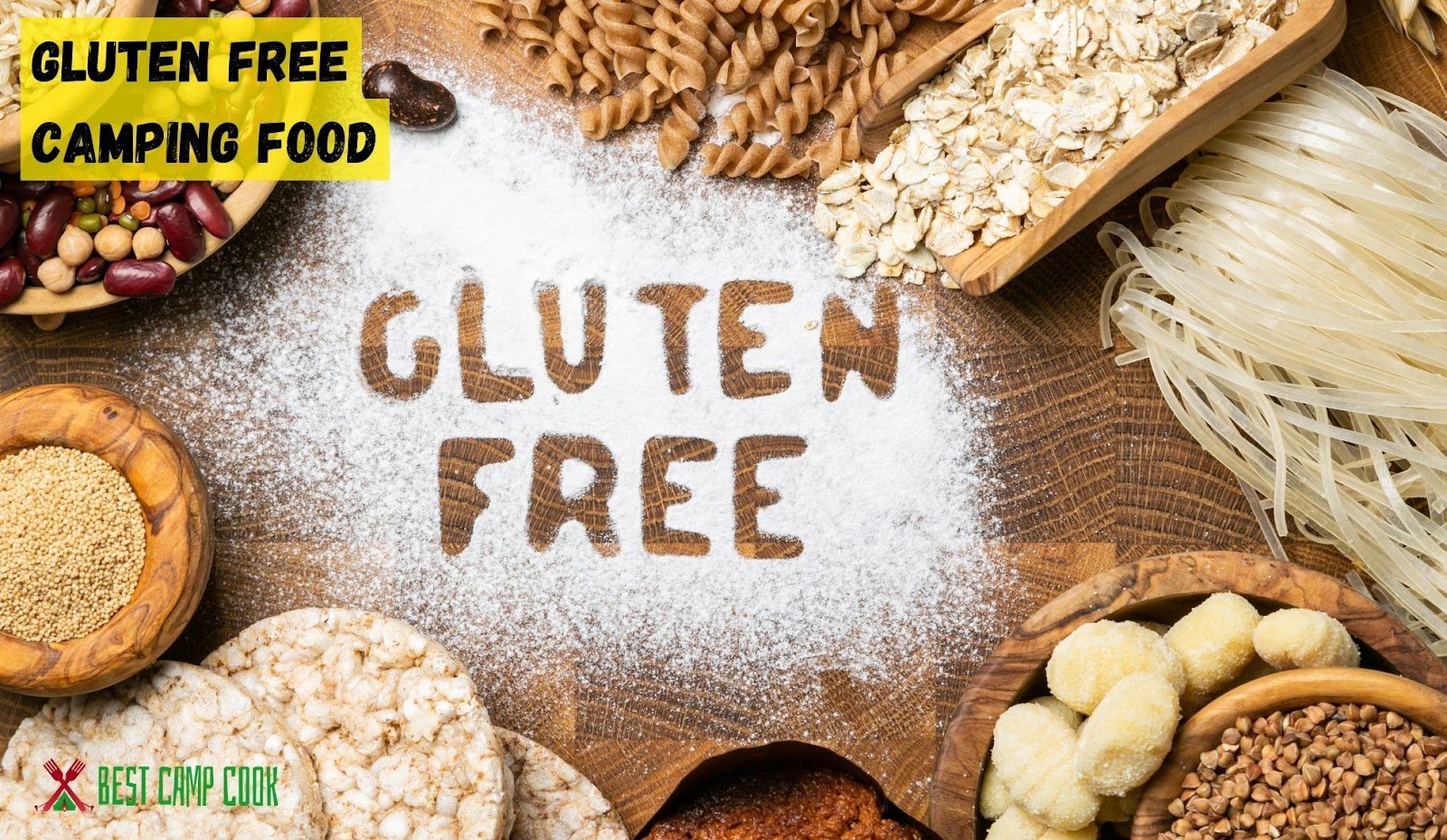
Are you craving a gluten-free adventure in the great outdoors? Look no further than “Gluten Free Camping Food! In this guide, we’ve curated a tantalizing collection of gluten-free recipes, tips, and tricks to make your camping experience unforgettable. Whether you’re a seasoned camper or a newbie, we’ll show you how to indulge in delicious gluten-free meals amidst nature’s beauty.
From hearty breakfasts to satisfying dinners and mouth watering snacks, we’ve got you covered. So, pack your bags, gather your camping gear, and get ready to embark on a gluten-free culinary journey like no other. Let’s explore the world of gluten-free camping food and create unforgettable memories around the campfire. Adventure awaits, and gluten-free goodness awaits your taste buds!
Main Summary: Gluten Free Camping Food
For gluten-free camping, it’s crucial to plan ahead with easy-to-prepare, lightweight, and non-perishable meals. Grilled foil packets containing proteins and vegetables, quinoa salads, rice noodle stir-fries, and gluten-free sandwiches or wraps are convenient options.
Gluten-free camp food refers to a wide range of delicious and safe food options designed specifically for individuals following a gluten-free diet during camping trips. When it comes to gluten-free camp food, it’s important to avoid ingredients that contain gluten, such as wheat, barley, rye, and their derivatives. Instead, opt for gluten-free alternatives like rice, corn, quinoa, and gluten-free flours.
For breakfast, you can enjoy gluten-free cereals, oatmeal, or homemade gluten-free pancakes. Lunch and dinner options include gluten-free wraps, sandwiches made with gluten-free bread, or grilled meats and vegetables. Don’t forget to pack gluten-free snacks like trail mix, gluten-free granola bars, fresh fruits, and gluten-free crackers.
When it comes to drinks, opt for gluten-free beverages such as water, 100% fruit juices, and gluten-free sodas. It’s always a good idea to check the labels of packaged foods and condiments to ensure they are certified gluten-free.
Remember to bring gluten-free cooking equipment and utensils to avoid cross-contamination. This includes separate cutting boards, cookware, and storage containers for gluten-free ingredients.
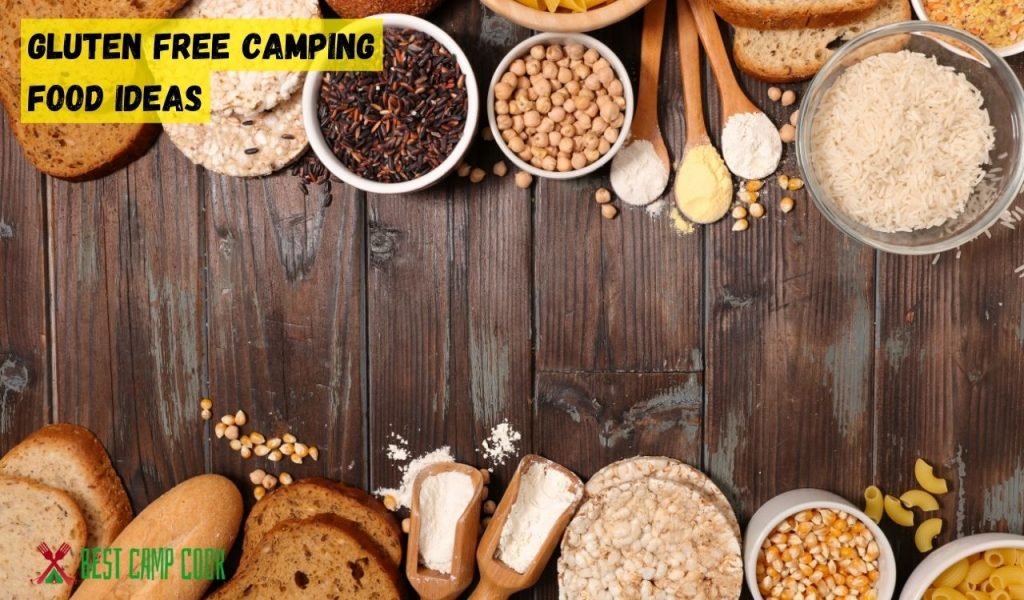
When it comes to enjoying the great outdoors and embarking on a camping adventure, having gluten-free food options is essential for those following a gluten-free diet. Planning meals while camping can be a bit challenging, but fear not! We’ve got you covered with an array of delicious gluten-free camping food ideas that will keep your taste buds satisfied and your energy levels high throughout your outdoor escapades.
One fantastic gluten-free option for a hearty and nutritious camping meal is grilled vegetable skewers with quinoa. Start by chopping up your favorite vegetables, such as colorful bell peppers, zucchini, red onions, and cherry tomatoes. Thread these vibrant veggies onto skewers, drizzle with a touch of olive oil, and season with a sprinkle of salt and pepper.
Grill the skewers over the campfire until the vegetables are tender and slightly charred. Serve them alongside a bed of fluffy cooked quinoa for a protein-packed and satisfying dish that will impress your camping companions.
Foil packet meals are a camping classic, and they can easily be adapted to suit a gluten-free diet. Prepare a mouthwatering meal by creating foil packets filled with your choice of fish, such as salmon, trout, or tilapia, combined with an assortment of flavorful vegetables. Asparagus, mushrooms, zucchini, and red bell peppers work wonderfully in this dish.
Season the fish and vegetables with aromatic herbs, a squeeze of fresh lemon juice, and a drizzle of olive oil. Seal the packets tightly and cook them over the campfire or on the grill until the fish is perfectly cooked and the vegetables are tender-crisp. Unwrap the foil packets and savor the delectable flavors and aromas of this gluten-free camping delight.
If you’re looking for a quick and easy gluten-free camping meal, a rice noodle stir-fry is a fantastic choice. Begin by preparing rice noodles according to the package instructions and setting them aside. In a skillet or campfire-friendly pan, heat a small amount of sesame oil and add an array of stir-fry vegetables such as crunchy broccoli florets, julienned carrots, snap peas, and sliced bell peppers.
Sauté the vegetables until they are crisp-tender and then add the cooked rice noodles to the pan. Season the stir-fry with gluten-free soy sauce or tamari for an extra burst of flavor. Toss everything together until well combined and heated through. In no time, you’ll have a mouthwatering gluten-free stir-fry ready to be enjoyed under the starlit sky.
Who doesn’t love a good taco? Fortunately, you can still enjoy this beloved Mexican dish while camping on a gluten-free diet. Instead of traditional tortillas, opt for lettuce wraps as a refreshing and gluten-free alternative. Season your choice of protein, such as grilled chicken, shrimp, or seasoned ground beef, with a blend of spices that tickle your taste buds.
Then, load up the lettuce wraps with the flavorful protein, and top them with fresh ingredients like diced tomatoes, sliced avocado, shredded lettuce, and a dollop of gluten-free salsa or guacamole. These campfire tacos are not only gluten-free but also delightfully light and refreshing.
A hearty and satisfying breakfast is crucial to kickstart your day of outdoor adventures. Campfire hash is a delicious gluten-free option that combines a medley of ingredients cooked to perfection in a cast-iron skillet. Begin by dicing potatoes into bite-sized cubes and cooking them in the skillet over the campfire with a drizzle of oil until they turn golden and crispy.
Next, add in diced onions, bell peppers, and your choice of cooked gluten-free sausage or bacon. Let everything sizzle together until the flavors meld and the vegetables become tender. Crack a few eggs over the hash and cover the skillet until the eggs are cooked to your desired level of doneness. This flavorful and hearty campfire hash is sure to keep you energized and ready to take on the day.
No camping trip is complete without the quintessential campfire treat – s’mores! Luckily, there are plenty of gluten-free graham cracker options available that allow you to indulge in this classic delight. Pack a box of gluten-free graham crackers, dairy-free chocolate bars, and marshmallows made without gluten-containing additives.
Toast the marshmallows to golden perfection over the campfire, sandwich them between two gluten-free graham crackers along with a piece of chocolate, and relish the gooey, chocolatey goodness that is the s’more.

Preparing for a camping trip requires careful consideration and planning, especially when you’re following a gluten-free diet. Ensuring you have the right gluten-free camping supplies on hand will make your outdoor experience both safe and enjoyable. Here are some essential items to include in your gluten-free camping arsenal:
Investing in a set of high-quality, airtight food storage containers is a must for any gluten-free camper. These containers will keep your gluten-free snacks, meals, and ingredients fresh, preventing cross-contamination with gluten-containing foods.
Look for containers that are labeled as BPA-free and dishwasher safe for easy cleaning. Additionally, consider choosing different-colored containers to help you easily identify which ones are designated for gluten-free items.
When it comes to cooking gluten-free meals while camping, having dedicated cookware and utensils is crucial. Pack a separate set of pots, pans, spatulas, and other cooking utensils that are used exclusively for gluten-free food preparation.
This will minimize the risk of cross-contamination with gluten-containing ingredients. Opt for non-stick or stainless steel cookware, as they are easier to clean and maintain while camping. Remember to pack a cutting board and knife specifically for gluten-free food preparation as well.
To avoid confusion and ensure the safety of your gluten-free meals, bring along gluten-free food labels and a marker. Use these labels to clearly mark your gluten-free containers, packaged foods, and snacks.
By labeling them, you’ll have a visual reminder that these items are exclusively for your gluten-free needs, reducing the chances of accidental mix-ups or contamination. This simple step will provide you with peace of mind during your camping trip.
Having a selection of gluten-free snacks and quick bites readily available is essential for those moments when hunger strikes between meals or when you need a convenient energy boost.
Pack a variety of gluten-free options such as individually wrapped nut bars, dried fruit, rice cakes, gluten-free granola, and trail mix. These snacks are not only convenient but also provide sustenance while you’re on the go, hiking, or exploring the wilderness.
Enjoying sandwiches and wraps while camping is still possible on a gluten-free diet. Look for gluten-free bread and wrap options that are sturdy enough to hold your favorite fillings without falling apart. Opt for brands that are specifically labeled as gluten-free to ensure they meet your dietary needs.
Alternatively, you can make your own gluten-free bread or wraps in advance and pack them for your camping trip. Keep them properly sealed and stored to maintain their freshness.
Don’t forget to bring along your favorite gluten-free condiments and spices to enhance the flavor of your meals. Pack small bottles or containers of gluten-free ketchup, mustard, mayonnaise, hot sauce, and salad dressings.
Additionally, bring along a selection of gluten-free spices and herbs to add delicious seasoning to your campfire-cooked dishes. Consider options like salt, pepper, garlic powder, paprika, and dried herbs. These little touches will elevate your gluten-free meals and make them even more enjoyable.
For those who love to bake or crave gluten-free treats while camping, packing gluten-free substitutes and alternatives is a game-changer. Bring along gluten-free flour blends, baking mixes, and sweeteners like honey or maple syrup to whip up delicious gluten-free pancakes, muffins, or cookies over the campfire.
You can also consider gluten-free pasta or rice noodles as alternatives for traditional pasta dishes. Having these options on hand allows you to enjoy familiar flavors and satisfy your cravings even in the great outdoors.
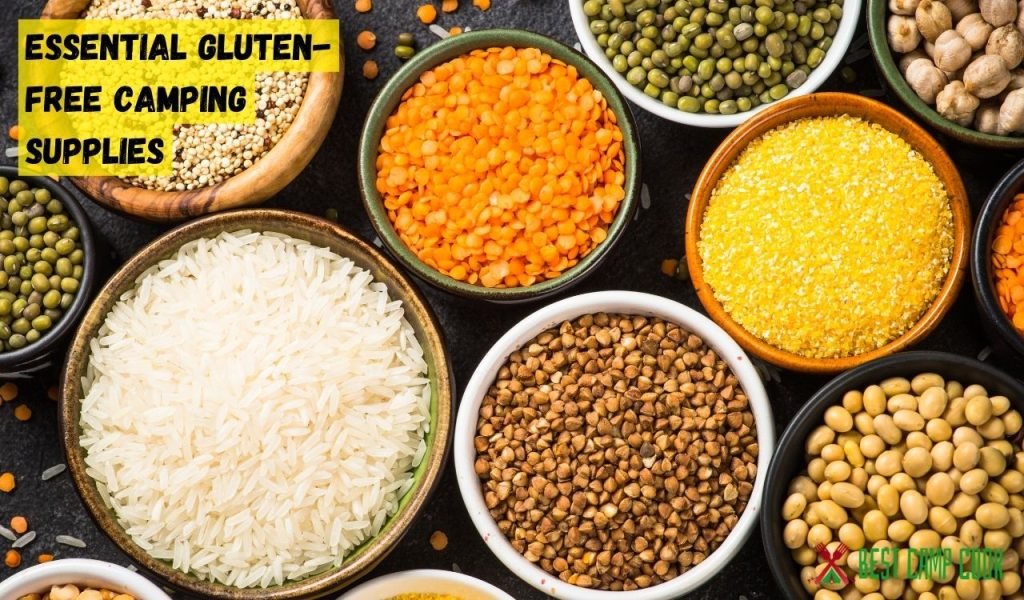
When you’re out exploring the wilderness, having a stash of gluten-free snacks and quick bites is essential to keep you energized and satisfied between meals. Whether you’re hiking, relaxing by the campfire, or enjoying a scenic view, these gluten-free options will keep your taste buds happy and your energy levels up. Here are some delicious gluten-free snacks and quick bites to pack for your next camping adventure:
Nuts and seeds are a fantastic choice for a gluten-free snack that provides a good dose of protein, healthy fats, and fiber. Pack a variety of your favorites such as almonds, cashews, walnuts, pumpkin seeds, or sunflower seeds. These nutrient-rich snacks are perfect for munching on during a hike or as a quick pick-me-up throughout the day.
Nature’s bounty offers a wide range of gluten-free options in the form of fresh fruits and vegetables. Pack portable fruits like apples, oranges, berries, or bananas that are easy to eat on the go and provide natural sweetness.
For vegetables, consider bringing carrot sticks, cherry tomatoes, or snap peas for a refreshing and crunchy snack. These colorful snacks not only provide vitamins and minerals but also help keep you hydrated during your outdoor activities.
Gluten-free granola and energy bars are convenient and satisfying snacks that are perfect for camping. Look for options that are specifically labeled as gluten-free and made with wholesome ingredients. Choose bars that are rich in nuts, seeds, dried fruits, and gluten-free grains like quinoa or oats. These bars provide a quick boost of energy and can easily fit in your backpack or pocket.
Rice cakes and gluten-free crackers are versatile snacks that can be enjoyed on their own or paired with toppings. They are lightweight, easy to pack, and provide a satisfying crunch. Consider bringing along individual packets of rice cakes or gluten-free crackers and pair them with spreads like nut butter, hummus, or cheese for a flavorful and filling snack.
Dried fruit and fruit leather are compact snacks that provide natural sweetness and a concentrated source of nutrients. Choose dried fruits without added sugars or sulfites. Options like dried apricots, raisins, mangoes, or apple slices are delicious and easy to carry. Fruit leather made from 100% fruit is also a great option for a chewy and naturally sweet snack.
If you’re a fan of savory snacks, gluten-free jerky is a fantastic choice. Look for beef, turkey, or chicken jerky that is specifically labeled as gluten-free and made with minimal ingredients. Jerky provides a good source of protein and is a great option for a quick and satisfying snack during your outdoor adventures.
Yogurt cups or pouches are convenient snacks that provide a good source of protein and probiotics. Opt for individual servings of dairy or non-dairy yogurt that are labeled as gluten-free. These portable snacks can be enjoyed as is or topped with gluten-free granola, fresh fruits, or nuts for added texture and flavor.
Indulge your sweet tooth with a bit of dark chocolate, which is often naturally gluten-free. Look for dark chocolate with a high percentage of cocoa and minimal added ingredients. You can also create your own gluten-free trail mix by combining your favorite nuts, dried fruits, seeds, and a sprinkle of dark chocolate for a delightful and customizable snack.

When it comes to planning a gluten-free menu for camping, a little preparation can go a long way in ensuring that you have delicious and safe meals during your outdoor adventure.
Here are some helpful tips and ideas to create a satisfying gluten-free menu for your camping trip:
Before heading out, take the time to plan your meals in advance. This will help you ensure that you have all the necessary ingredients and avoid any last-minute food-related challenges.
Consider the number of days you’ll be camping and plan meals accordingly. Make a list of breakfast, lunch, dinner, and snack options, and note any specific gluten-free ingredients or alternatives you’ll need.
Pack essential gluten-free staples to use as the foundation for your meals. This may include gluten-free bread, tortillas, pasta, rice, and gluten-free flour for baking. These staples will form the basis of many of your meals and provide you with familiar options.
Incorporate fresh and whole foods into your gluten-free camping menu. Fruits, vegetables, lean meats, fish, eggs, and legumes are naturally gluten-free and offer a wide range of possibilities.
Fresh produce can be used for salads, stir-fries, side dishes, or even grilled as a main course. Make use of nature’s bounty to add flavor, nutrition, and variety to your meals.
To simplify your camping cooking experience, consider pre-cooking and pre-packaging some of your meals. This can save time and effort, especially after a long day of outdoor activities.
Prepare gluten-free stews, or chili ahead of time and portion them into individual containers. Label and freeze them before your trip. As you camp, simply reheat these pre-cooked meals over the fire or using a portable stove.
Foil packets and skewers are excellent tools for cooking gluten-free meals while camping. Wrap seasoned meat, fish, or vegetables in aluminum foil and place them on the grill or directly on the campfire.
This method allows for easy cooking and cleanup while preserving the flavors and juices of the ingredients. Skewers can be used to create gluten-free kebabs with marinated meats and a variety of vegetables for a flavorful and fun meal.
Enhance the taste of your gluten-free meals by bringing along gluten-free condiments and seasonings. Pack items such as gluten-free soy sauce, ketchup, mustard, mayonnaise, herbs, spices, and marinades. These additions will add flavor and depth to your dishes without compromising their gluten-free status.
Expand your gluten-free menu options by incorporating alternative grains and flours. Quinoa, rice, cornmeal, and buckwheat are versatile and nutritious choices. Experiment with gluten-free flours like almond flour, coconut flour, or chickpea flour for baking bread, pancakes, or muffins over the campfire. These alternatives can provide variety and creativity in your gluten-free camping meals.
Stock up on gluten-free snacks and desserts to keep your energy levels up and satisfy your sweet tooth. Pack gluten-free granola bars, trail mix, dried fruits, and nuts for quick and convenient snacks. For dessert, consider making gluten-free s’mores using gluten-free graham crackers or enjoy a batch of gluten-free cookies or brownies made ahead of time.
Remember to stay hydrated during your camping trip by packing gluten-free beverages. Bring plenty of water and consider options like herbal teas, fruit-infused water, or gluten-free sports drinks. Avoid pre-packaged drinks that may contain hidden gluten and opt for homemade or trusted gluten-free brands.
Proper food storage and handling are essential to prevent cross-contamination and ensure food safety. Use separate coolers or containers for gluten-free and gluten-containing foods.
Clearly label and seal your gluten-free items to avoid any mix-ups. Keep raw meats and perishable items properly chilled and stored away from other foods. Use separate utensils and cutting boards for gluten-free preparation.
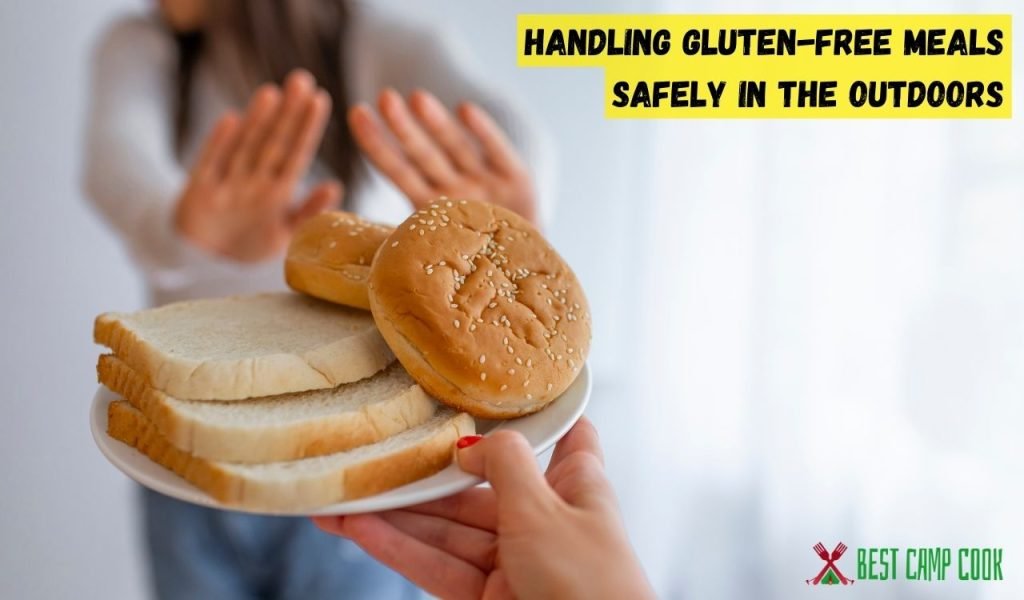
When it comes to handling gluten-free meals in the great outdoors, it’s crucial to prioritize food safety and prevent cross-contamination. Here are some important tips to help you handle gluten-free meals safely during your camping adventures:
To avoid cross-contamination, pack separate food containers and utensils specifically designated for gluten-free meals. Use airtight containers to store gluten-free ingredients and cooked meals. Ensure that all utensils, including cutting boards, knives, and cooking utensils, are thoroughly cleaned before use.
Properly preparing and storing gluten-free meals is essential to maintain their freshness and prevent the growth of harmful bacteria. Cook your meals thoroughly to safe internal temperatures and promptly store any leftovers in sealed containers. Store perishable gluten-free items in coolers with ice or ice packs to maintain their safety and quality.
Take precautions to prevent cross-contamination during meal preparation. Designate separate cutting boards for gluten-free ingredients and avoid using the same utensils or surfaces that have come into contact with gluten-containing foods. Keep gluten-free ingredients away from potential sources of contamination, such as breadcrumbs, flour, or shared condiments.
Before cooking gluten-free meals, make sure to clean cooking surfaces thoroughly. Use warm, soapy water to clean grill grates, campfire cooking surfaces, and any other cooking tools. This will help remove any traces of gluten or other allergens that might be present.
When purchasing pre-packaged or processed foods for your camping trip, read the labels carefully and verify their gluten-free status. Look for products labeled “gluten-free” or certified by reputable gluten-free organizations. Take note of any potential cross-contamination warnings or allergen statements on the packaging.
Pay attention to the ingredients in seasonings and sauces that you use for flavoring your gluten-free meals. Some condiments and sauces may contain hidden sources of gluten, such as wheat-based soy sauce or barley-based malt vinegar. Opt for certified gluten-free alternatives or make your own gluten-free versions.
If you’re camping with others, it’s essential to educate your camping companions about the importance of handling gluten-free meals safely. Make sure they understand the risks of cross-contamination and the need to respect your dietary needs. Communicate your concerns and provide guidance on how to support your gluten-free lifestyle during the trip.
In case of emergencies or unforeseen circumstances, it’s wise to have a backup plan for gluten-free meals. Pack non-perishable gluten-free snacks and emergency meals that can be easily prepared, such as gluten-free energy bars or dehydrated meals. This will ensure that you have safe and suitable options even in challenging situations.
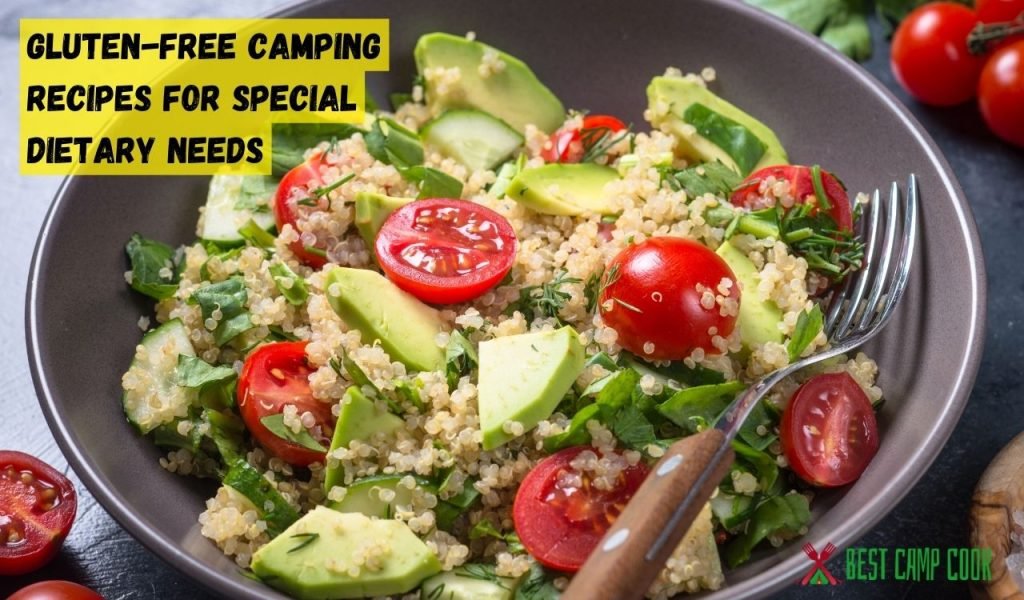
When it comes to camping with special dietary needs, such as gluten-free requirements, it’s essential to have a repertoire of delicious and safe recipes. Here are some gluten-free camping recipes tailored for various dietary needs, ensuring everyone can enjoy a satisfying outdoor dining experience:
For vegetarian campers who follow a gluten-free diet, a refreshing quinoa salad is a nutritious and filling option. Cook quinoa beforehand and let it cool. In a bowl, combine the cooked quinoa with a medley of chopped vegetables like cucumbers, cherry tomatoes, bell peppers, and fresh herbs.
Drizzle with a tangy dressing made from lemon juice, olive oil, and your preferred seasonings. Pack it in a sealed container and enjoy a light and satisfying meal during your camping adventure.
If you’re avoiding dairy products, dairy-free stuffed bell peppers are a flavorful and comforting camping meal. Hollow out bell peppers and stuff them with a mixture of cooked rice, vegetables, and protein sources like beans or tofu. Season with herbs, spices, and a drizzle of olive oil.
Wrap each stuffed pepper in aluminum foil and cook them over the campfire or on a portable grill until the peppers are tender and the filling is heated through.
For campers with nut allergies, nut-free energy balls provide a portable and energizing snack. In a bowl, combine gluten-free oats, seeds (such as sunflower or pumpkin seeds), dried fruits (like raisins or chopped apricots), and a natural sweetener such as honey or maple syrup.
Mix until well combined, then roll the mixture into bite-sized balls. Pack them in an airtight container, and they will serve as a quick and nourishing snack during your camping trip.
If you’re following an egg-free diet but still crave a hearty breakfast, egg-free sweet potato hash is a fantastic choice. Peel and dice sweet potatoes, and cook them in a skillet with a drizzle of oil over the campfire or portable stove.
Add onions, bell peppers, and seasonings like paprika, garlic powder, and dried herbs. Cook until the sweet potatoes are tender and lightly browned. This flavorful hash is a filling and satisfying breakfast option that will fuel your camping adventures.
No camping trip is complete without indulging in the classic treat of s’mores. For gluten-free campers, it’s easy to enjoy this nostalgic dessert with a few substitutions. Use gluten-free graham crackers or opt for gluten-free cookies as a replacement.
Roast marshmallows over the campfire until golden brown and sandwich them between the gluten-free crackers or cookies along with a piece of chocolate. The result is a gooey and delicious s’more that everyone can enjoy.
For those following a keto diet, grilled chicken and vegetable skewers are a low-carb and gluten-free camping recipe. Alternate chunks of marinated chicken breast and low-carb vegetables like zucchini, mushrooms, and cherry tomatoes on skewers.
Grill the skewers over the campfire or portable grill until the chicken is cooked through and the vegetables are tender. This protein-packed meal is both satisfying and suitable for your keto lifestyle.
If you follow a paleo diet and love seafood, grilled salmon with lemon-dill sauce is a mouthwatering choice for your camping menu. Season salmon fillets with salt, pepper, and a squeeze of fresh lemon juice. Grill the salmon over medium heat until it flakes easily with a fork.
While the salmon is cooking, prepare a simple sauce by combining dairy-free mayonnaise, fresh dill, lemon zest, and a pinch of garlic powder. Serve the grilled salmon with a dollop of the lemon-dill sauce for a flavorful and protein-rich camping meal.
For campers following a low-FODMAP diet, a beef and vegetable stir-fry is a delicious and tummy-friendly option. Slice beef into thin strips and marinate it in a mixture of gluten-free soy sauce, ginger, and a dash of maple syrup.
In a skillet or campfire-friendly pan, cook the beef until browned, then add low-FODMAP vegetables like bok choy, bell peppers, and zucchini. Stir-fry until the vegetables are tender-crisp. Serve the flavorful stir-fry over a bed of cooked rice or gluten-free noodles for a satisfying camping dinner.
When planning a gluten-free camping trip, it’s essential to find campsites and resources that cater to your dietary needs. Here are some valuable tips and suggestions for finding gluten-free-friendly campsites:
Camping is a wonderful outdoor activity that allows you to connect with nature and enjoy the beauty of the great outdoors. If you follow a gluten-free diet, it’s important to plan ahead to ensure a safe and enjoyable camping experience. Here are some valuable tips to help you have a successful gluten-free camping trip:
When it comes to enjoying a gluten-free camping experience, being aware of what to avoid is just as important as knowing what to include. Here are some key things to avoid to ensure a safe and enjoyable gluten-free camping trip:
In conclusion, with careful planning and preparation, you can enjoy a safe and delicious gluten-free camping experience. Pack essential supplies, explore diverse food ideas, find gluten-free-friendly campsites, prepare snacks, and be mindful of challenges. By following these guidelines, you can embrace the outdoors while maintaining your gluten-free lifestyle. Happy camping!
Gluten-free food for camping refers to food items that do not contain gluten, a protein found in wheat, barley, rye, and their derivatives. Gluten-free camping food typically includes alternatives to traditional camping staples, such as gluten-free bread, wraps, snacks, and condiments.
It also involves incorporating gluten-free grains, fruits, vegetables, lean proteins, and dairy or non-dairy alternatives into meals. The aim is to provide safe and enjoyable food options for individuals with gluten intolerance or celiac disease while enjoying outdoor activities and camping.
Yes, there are plenty of gluten-free camping recipes available. You can find recipes for gluten-free pancakes, foil packet meals, grilled vegetables, gluten-free s’mores, and more. Websites, blogs, and camping cookbooks often offer a wide range of gluten-free recipe options.
Proper food storage is essential to maintain the freshness and safety of gluten-free food while camping. Use airtight containers or resealable bags to store perishable items and keep them in a cooler with ice or ice packs. Non-perishable gluten-free snacks can be stored in a separate dry food container.
When it comes to gluten-free camping snacks, consider options like fresh fruits, gluten-free trail mix, rice cakes with nut butter, veggie sticks with hummus, and gluten-free energy bars. These snacks are convenient, delicious, and safe for those with gluten sensitivities.
For gluten-free alternatives to hot dogs, choose gluten-free sausages or frankfurters made with gluten-free ingredients. Opt for gluten-free burger buns or lettuce wraps instead of traditional buns. You can also explore plant-based burger options that are gluten-free or make your own gluten-free burger patties using ingredients like chickpeas, quinoa, or black beans.
Yes, there are pre-packaged gluten-free camping meals available in many grocery stores and online. These meals are specifically designed to meet gluten-free dietary needs and often come in convenient, lightweight packaging. Look for reputable brands that clearly label their products as gluten-free.
Yes, there are gluten-free beverage choices for camping. You can enjoy gluten-free options such as pure fruit juices, bottled water, and some alcoholic beverages like gluten-free beer or cider. Always check labels for gluten-free certification to ensure your drinks are safe to consume while camping.
Absolutely! You can enjoy gluten-free desserts while camping. Some ideas include gluten-free cookies, fruit salads, gluten-free brownies or bars, roasted marshmallows (check for gluten-free brands), or even grilled fruit topped with honey or cinnamon.